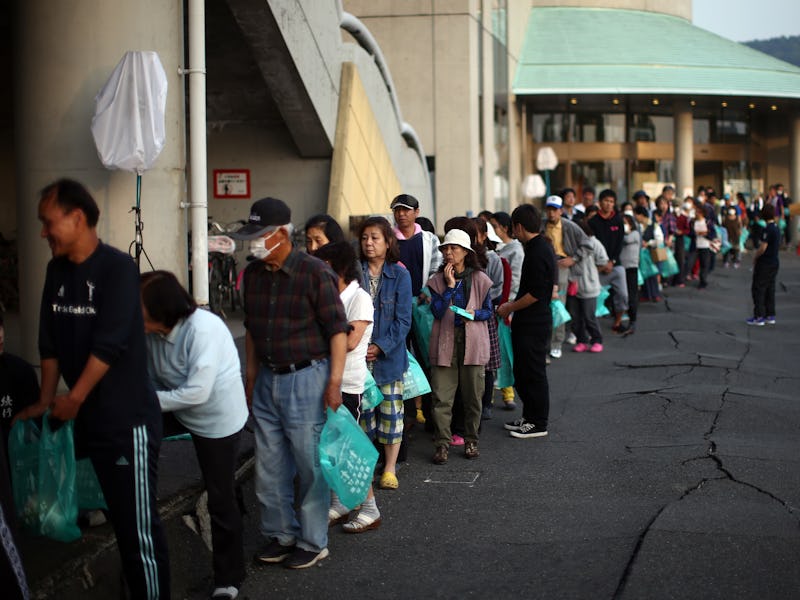Japan Decides to Wear Fault Lines With Pride
The fault lines of the recent Mashiki earthquake will be designated as cultural property.

The people of Mashiki, a small community in the Kumamoto Prefecture of Japan, are choosing to memorialize the 6.2 and 7.3-magnitude earthquakes that destroyed most of their town in an unusual, but intriguing way. City officials have designated the earthquakes’ fault lines as official cultural property of the city of Mashiki. They intend to maintain them as a monument to both chaos and what emerged from it.
By converting the fault lines into a landmark of sorts, city officials hope to remind and educate future generations about the tragedy that claimed at least 49 lives and injured thousands of others. According to officials of the Kumamoto Prefecture, this marks the first time that the vestiges or reminders of the recent series of earthquakes have been preserved and safeguarded as cultural property, The Asahi Shimbun reports.
When the initiative to preserve the fault lines began gaining momentum in May, the education board of Mashiki focussed in on two areas: the Futagawa fault zone at the Shioijinja Shrine, where the uplift is about twelve feet high, and a 60-foot uplift on private land a few kilometers southwest. While the Mashiki government has yet to decide if structures will go up to protect the fault lines, the hope is that the preserved areas will eventually be designated as natural national monuments.
Not only do the sites of preserved fault activity help heal cultural memory, but they also further the safety of current and future generations. “It is, scientifically, extremely important to preserve fault lines that appeared on the surface as evidence of the significant damage that the earthquake caused,” said Takashi Nakata, a former geography professor at Hiroshima University.
These particular fault lines may be the first reminders of the recent Kumamoto earthquakes to be preserved, but Japan has an extensive history of protecting faults, such as the Nojima fault that prompted the cataclysmic 1995 Great Hanshin Earthquake. The Atomic Bomb Dome in Hiroshima, Japan serves the same spirit of cultural memory, honoring the 70,000 who were immediately killed by the atomic bomb and an additional 70,000 who died from radiation-related injuries. While the death tolls of these two tragedies are incomparable, they both showcase Japan’s dedication to honoring its past and furthering its legacy.